Six Common Houseplant Problems, and What to Do About Them

Despite your best efforts to maintain a little greenery around the house, foliage and florals can have a way of wilting, drooping, and drying out with seemingly little explanation. But before you totally renounce your green thumb, try getting to the bottom of your houseplant troubles with some simple troubleshooting. To help you out, we've rounded up a few of the most common problems when it comes to keeping houseplants healthy and thriving, including everything from how to spot each issue, to how to fix it.
RELATED: GROW GORGEOUS HOUSEPLANTS IN ANY KIND OF LIGHT
The Problem: Root Rot
When you find your houseplants starting to look wilted, worn, and discolored, it might be time to check up on your roots. Without proper drainage, houseplants can quickly begin to experience root rot, which is, as the name suggests, the rotting of a plants roots. To see if your plant is experiencing root rot, try gently taking your plant out of the soil and having a look at its roots. While healthy roots will be sturdy and pliable, rotting roots tend to be mushy and fragile.
The Fix: Rinse, Trim, and Repot
In the case that you're seeing the latter, you can try to remedy the problem by gently rinsing off roots and trimming away those that are affected. In the case that you find yourself having to trim a significant amount of roots, you might want to prune a few of the plant's actual leaves, as well, which can help to promote the growth of new roots in the plant. Once you're finished, repot the plant in fresh soil, and in a container with plenty of drainage holes.
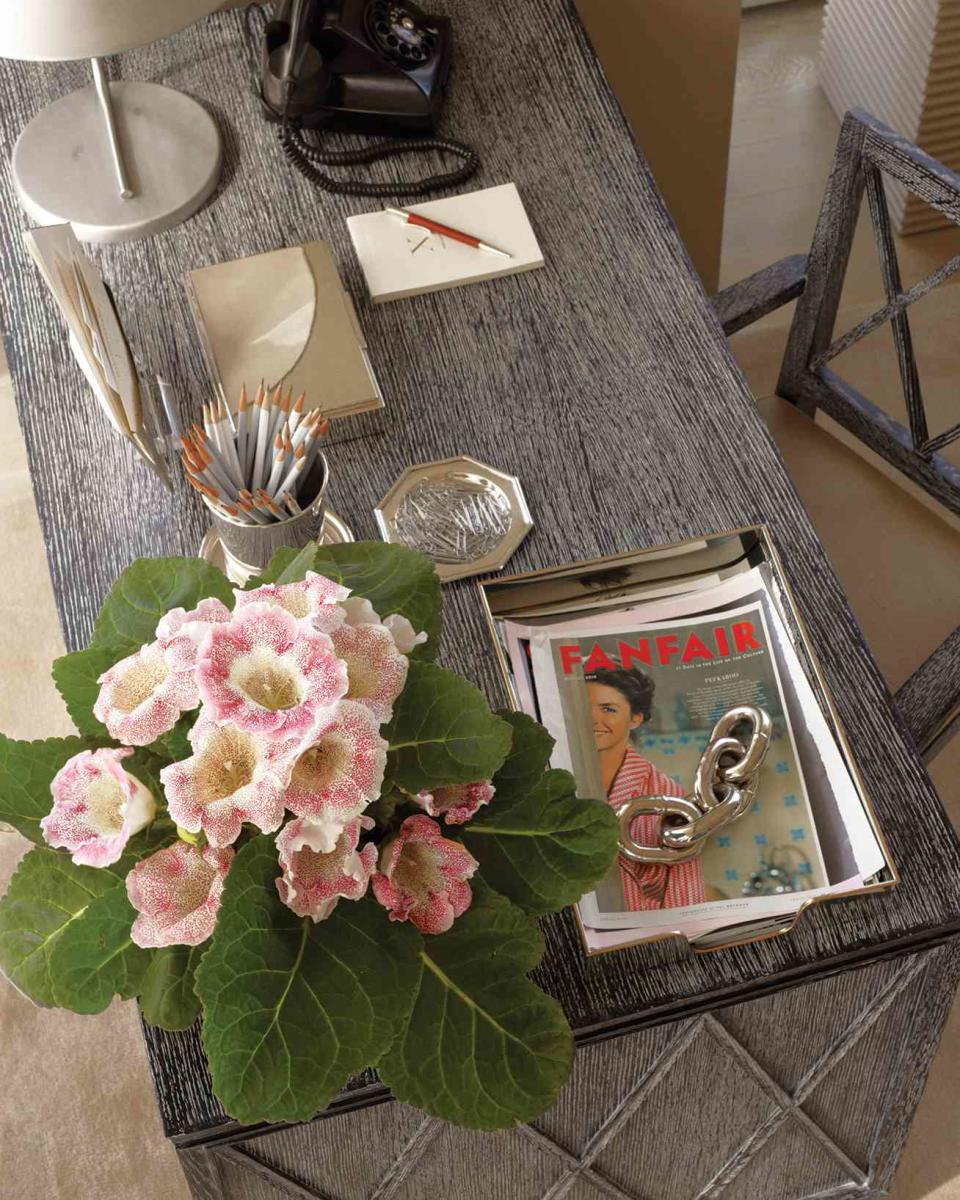
The Problem: Overwatering
While it's important to stay on top of watering your houseplants in order to help your plants stay in good shape, there is such a thing as giving them too muchwater. When that's the case, wilting and brown spots popping up on plant leaves may serve as a kind of "red flag" to let you know that you should go a little easier on the watering. Left unchecked, overwatering will eventually contribute to root rot, making it essential to see the warning signs early.
The Fix: Know Your Plant
The key to getting your watering routine just right is familiarizing yourself with the general water requirements for your plant variety-some plants, like hibiscus, need frequent watering, while others, like salvia, are totally fine without it-and to set your watering schedule from there.
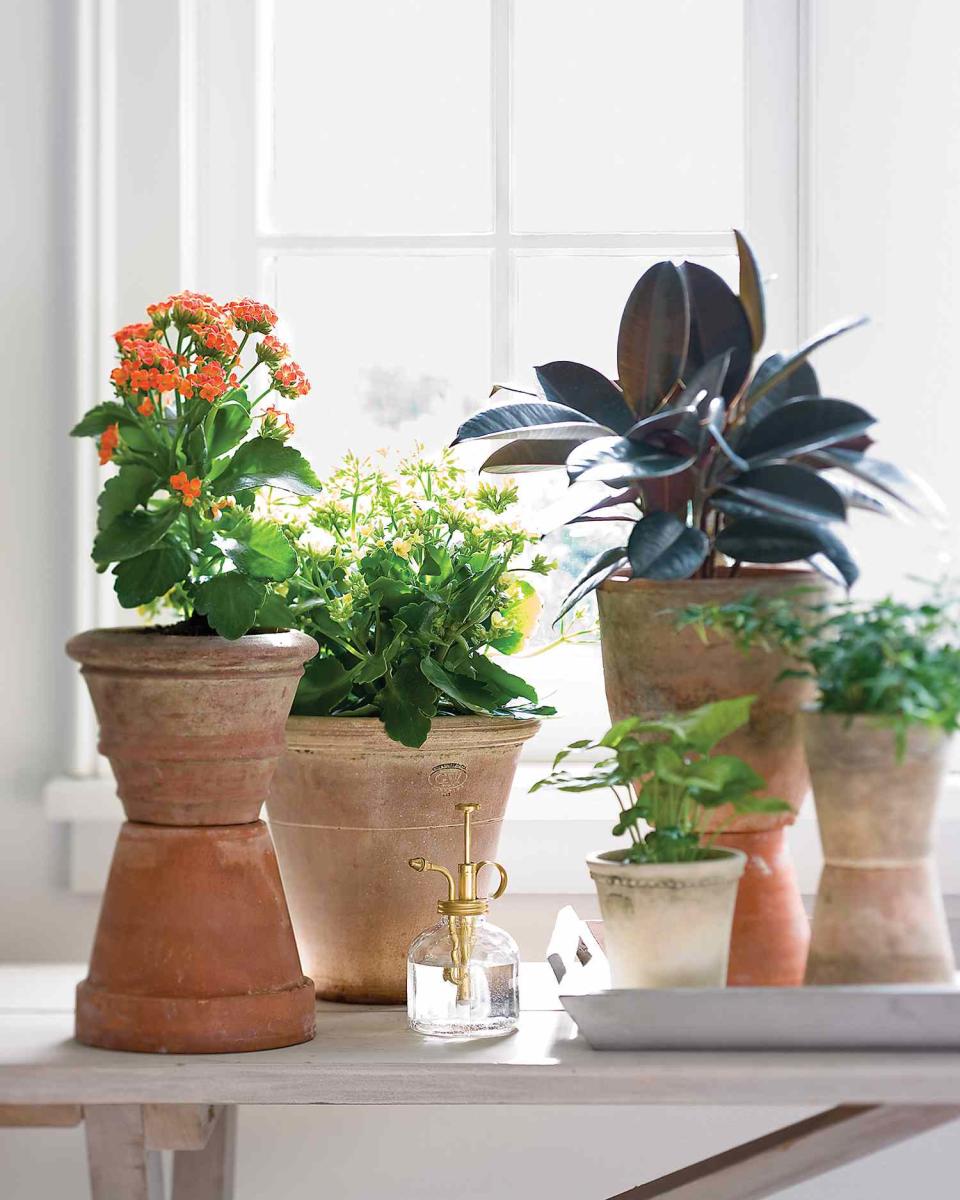
The Problem: Not Enough Sun
It's no secret that sunlight, or any light, is essential to healthy plant life. And while, generally speaking, basic shrubs and foliage don't necessarily need quite as much sun as flowering plants, when it comes to determining how much sunlight your houseplant actually needs, the answer typically comes on a case-by-case basis.
The Fix: Look at the Leaves
When leaves start yellowing and newer leaves are failing to grow to their full size, this could be a sign that your plant is in need of some more direct light and that it's time to try moving your plant closer to a window for increased exposure to the sun.
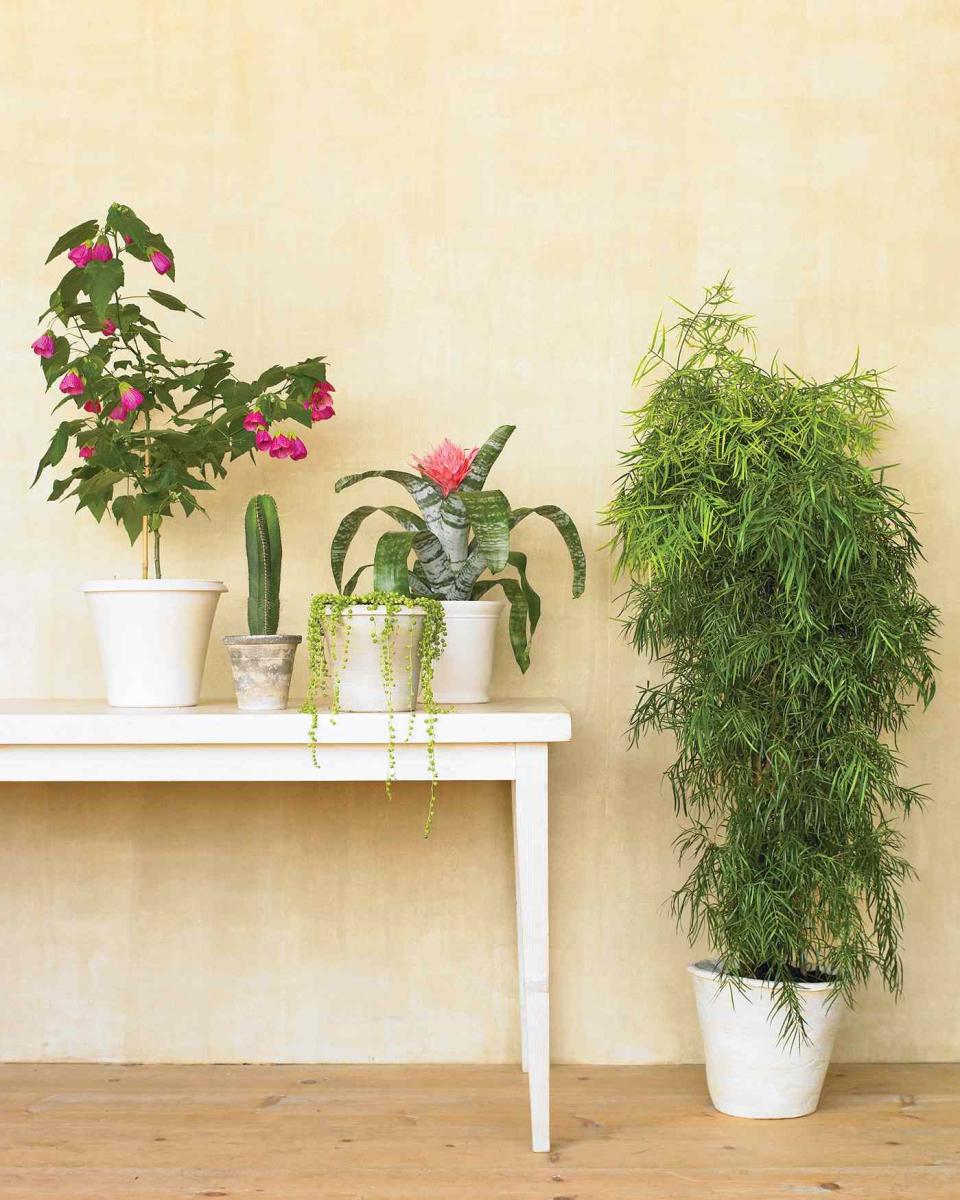
The Problem: Nutrient Deficiency
When leaves start to look slightly discolored, this could be a sign that your houseplant is lacking in nutrients, particularly when it comes to three of the most essential plant nutrients: nitrogen, phosphorous, and potassium.
The Fix: Fertilize It
In the case of a nutrient deficiency, it's easy enough to address the problem by adding in some nutrient-rich fertilizer. You can also try different organic solutions, like adding coffee grounds to your houseplants' soil to boost nitrogen content.
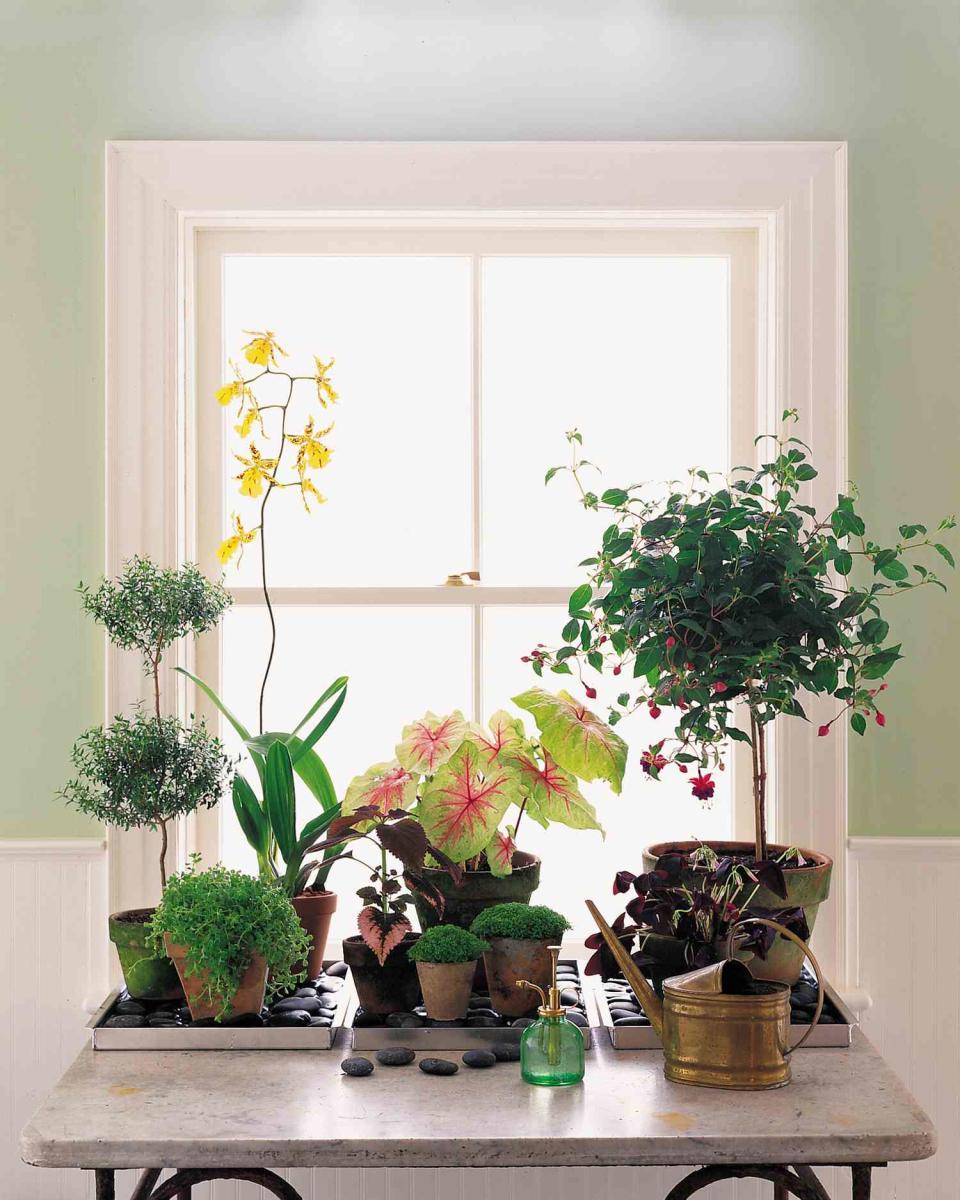
The Problem: Dry Air
While different plants have different requirements when it comes to things like water and temperature, most are pretty similar in the fact that they don't really thrive in dry air. Rather, plants prefer moist, slightly humid environments, which isn't usually the condition of the air indoors. If you notice that plant leaves are browning and slightly drying out, this might be a sign that your houseplant is craving a little bit more moisture in the air.
The Fix: Set a Spritzing Schedule
Alleviate the problem by first making sure that your plant isn't placed near sources of heat, like a radiator or heater. Then, offer your plant an occasional mist of water to keep it from drying out. Another option, if you're not sure you can keep up with spritzing your houseplant regularly, is to place a tray with pebbles and water under your potted houseplant. That water, which can't be absorbed by the roots, will eventually evaporate and help make the air directly surrounding the plant just a bit more humid.
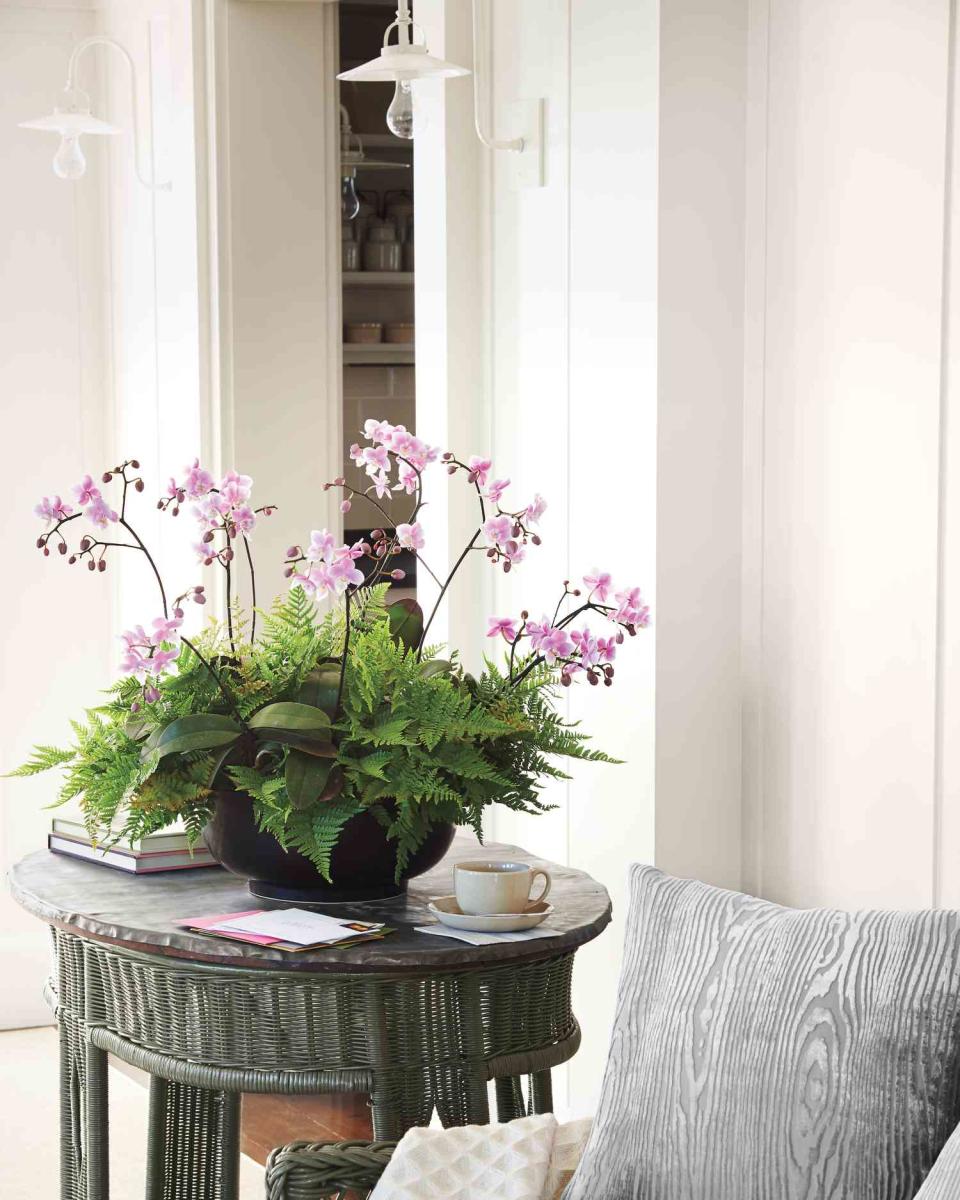
Annie Schlechter
The Problem: Temperature
When plants are exposed to too many different temperature ranges, they're not likely to have the best reaction to the constant shifts.
The Fix: Stick to One Room
One way to make sure that you're not causing too much temperature fluctuation for your indoor foliage is to avoid moving potted plants between different rooms. Each individual room in your home is, in a sense, its own different environment, and even the slightest shifts in temperature between rooms can be bad news for houseplants. One time a shift in temperature may actually work wonders on plant health, though? In the evening. To mimic the conditions plants are used to in nature, it might be a good idea to try cranking down the thermostat just a smidge at night.

